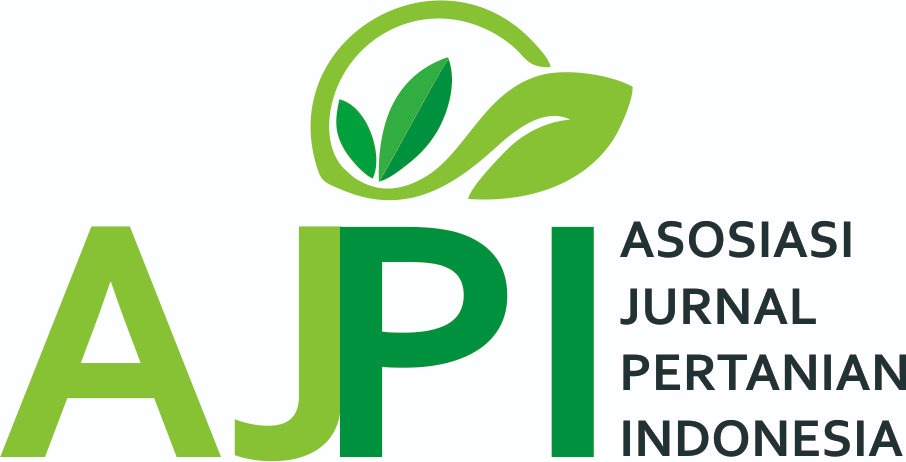Identifikasi Sifat Pemulihan pada Tanaman Cabai (Capsicum spp.): Implikasinya terhadap Pemuliaan Varietas Tahan Begomovirus
DOI:
https://doi.org/10.33005/plumula.v13i2.257Keywords:
Bogomovirus, Disease resistance, Jasmonic acid, Recovery mechanism, Salicylic acidAbstract
Penyakit kuning yang disebabkan oleh virus Begomovirus merupakan ancaman serius bagi budidaya cabai (Capsicum spp.), menyebabkan kerugian hasil hingga 80%. Penelitian ini mengidentifikasi mekanisme recovery pada genotipe cabai yang awalnya menunjukkan gejala parah tetapi mampu pulih seiring waktu. Sebanyak 19 genotipe cabai (C. annuum dan C. frutescens) diuji dengan inokulasi Begomovirus melalui vektor kutu kebul (Bemisia tabaci). Pengamatan gejala dilakukan setiap 10 hari hingga 60 hari setelah inokulasi, dengan keparahan penyakit (KP) dihitung menggunakan skor gejala (1–5). Hasil menunjukkan bahwa genotipe G2 (C. frutescens 'Bonita') mengalami recovery, ditandai penurunan KP dari 4 (daun kuning, keriting, dan kerdil) pada hari ke-30 menjadi 2 (daun tanaman kuning keriting) pada hari ke-60. Genotipe G14 paling tahan (KP 5,19%), sedangkan G12 paling rentan (KP 88,15%). Mekanisme recovery diduga melibatkan aktivasi hormon asam salisilat (SA) dan asam jasmonat (JA), serta silencing RNA virus. Temuan ini memberikan wawasan baru untuk pengembangan varietas tahan Begomovirus melalui pendekatan pemuliaan berbasis recovery.
Downloads
Downloads
Published
How to Cite
Issue
Section
License
Copyright (c) 2025 Yuke Mareta Ariesta Sandra

This work is licensed under a Creative Commons Attribution 4.0 International License.
Authors who publish with this journal agree to the following terms:
- Authors retain copyright and grant the journal right of first publication with the work simultaneously licensed under a Creative Commons Attribution License that allows others to share the work with an acknowledgement of the work's authorship and initial publication in this journal.
- Authors are able to enter into separate, additional contractual arrangements for the non-exclusive distribution of the journal's published version of the work (e.g., post it to an institutional repository or publish it in a book), with an acknowledgement of its initial publication in this journal.
- Authors are permitted and encouraged to post their work online (e.g., in institutional repositories or on their website) prior to and during the submission process, as it can lead to productive exchanges, as well as earlier and greater citation of published work (See The Effect of Open Access).











